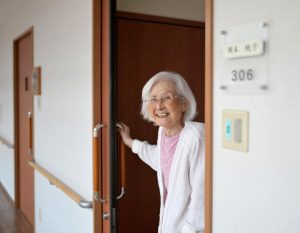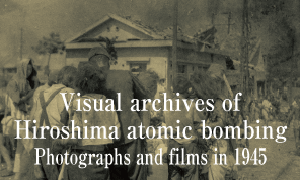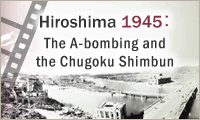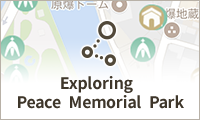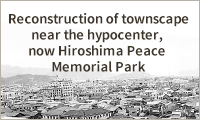Documenting Hiroshima, Witnesses to horrors of atomic bombing: Sumiko Okamoto becomes open about A-bomb experience after turning 90, Son conveys mother’s account
Jun. 10, 2025
by Michiko Tanaka, Senior Staff Writer
“Mama-san was so beautiful,” said Sumiko Okamoto, 95, of Hiroshima’s Minami Ward. When speaking about her mother, Sumiko smiles like a young girl. When she passed the entrance exam for First Hiroshima Prefectural Girls’ High School (now Minami High School), the school she had hoped to go, at age 12, her mother was especially pleased. They got a commemorative photo taken. “She bought me a leather bag, too,” Sumiko said.
But when asked about “that day,” Sumiko’s face instantly clouds over. On August 6, 1945, her mother left for work never to return. From the next day, she searched for her in the city reduced to scorched earth, but not even her remains were found.
She kept the experience at the rear of her memory for many years. Only after she turned 90 did she begin speaking about it. She was encouraged by her only son, Masataka Okamoto, 73, of Nishi Ward, when he decided to apply for the city’s Hibakusha Family Member Legacy Successor program.
“I thought, if there was hell, it must be like this.” In a video recorded three years ago, she clearly described the city where so many bodies lay, then began to take off her jacket. “I’m sweating all over. I can’t stand just the idea of remembering the atomic bombing.”
Masataka says, “I’m glad I listened to her experience. It was in the nick of time.” Finding it difficult to live alone, Sumiko moved to a nursing home in the city in January last year. She seems to have become more forgetful. “I should have talked more with my grandfather, too. He must have had conflicting feelings.” Her grandfather, Sumiko’s father, was a second-generation Japanese American born in Hawaii.
(Originally published on June 10, 2025)
“Mama-san was so beautiful,” said Sumiko Okamoto, 95, of Hiroshima’s Minami Ward. When speaking about her mother, Sumiko smiles like a young girl. When she passed the entrance exam for First Hiroshima Prefectural Girls’ High School (now Minami High School), the school she had hoped to go, at age 12, her mother was especially pleased. They got a commemorative photo taken. “She bought me a leather bag, too,” Sumiko said.
But when asked about “that day,” Sumiko’s face instantly clouds over. On August 6, 1945, her mother left for work never to return. From the next day, she searched for her in the city reduced to scorched earth, but not even her remains were found.
She kept the experience at the rear of her memory for many years. Only after she turned 90 did she begin speaking about it. She was encouraged by her only son, Masataka Okamoto, 73, of Nishi Ward, when he decided to apply for the city’s Hibakusha Family Member Legacy Successor program.
“I thought, if there was hell, it must be like this.” In a video recorded three years ago, she clearly described the city where so many bodies lay, then began to take off her jacket. “I’m sweating all over. I can’t stand just the idea of remembering the atomic bombing.”
Masataka says, “I’m glad I listened to her experience. It was in the nick of time.” Finding it difficult to live alone, Sumiko moved to a nursing home in the city in January last year. She seems to have become more forgetful. “I should have talked more with my grandfather, too. He must have had conflicting feelings.” Her grandfather, Sumiko’s father, was a second-generation Japanese American born in Hawaii.
(Originally published on June 10, 2025)

